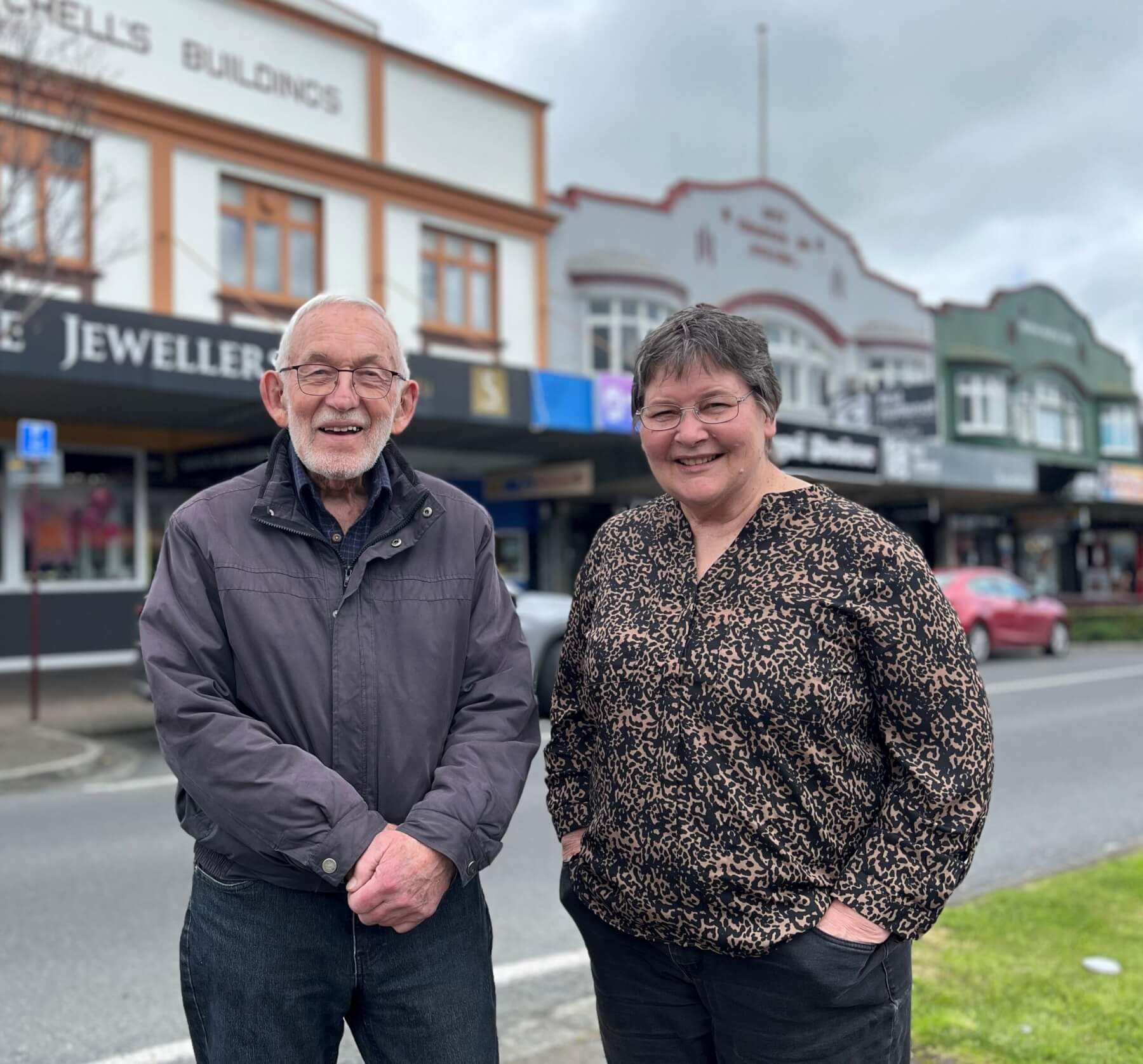
Alan Hall and Sandra Metcalfe outside three Alexandra St buildings which appear in the planned book – the Burchell’s building built in 1924, the Thompson building built in 1937 and the Burns House built in 1936.
An ambitious project is set to tell the “incredible” tale of a nearly 70-year chapter in Te Awamutu’s history.
Since 2017, Te Awamutu branch of the New Zealand Society of Genealogists members have been producing an as yet untitled book telling the stories of more than 30 buildings in the town’s central business district.
The idea for the book was sparked in 2016 when Heritage New Zealand’s Ben Pick spoke to branch members about a similar project in Dargaville.
A projected print date of next April has been pencilled in for the hard cover Te Awamutu project.
The book is spearheaded by Sandra Metcalfe, a former Te Awamutu branch convenor and committee member, and Alan Hall, a historian and former education lecturer. Hall has researched and written much of it.
The pair is supported by Ann and Tony Edmondson, who have editing and graphic design experience. The Te Awamutu Business Chamber is also helping.
Metcalfe said the final iteration of the book is divided into four sections. The first discusses Te Awamutu’s economic history, covering off important industries like the sale yards, the dairy factory, and the Te Awamutu Business Chamber, founded about 1911.
The other sections tell the stories of buildings in Arawata, Sloane and Alexandra streets. The book spans the nearly 70 years from 1890, roughly the year Metcalfe said the Rickit Building – thought to be Te Awamutu’s oldest building still standing – was built, through to about 1957 when the Arawata St Paper Plus building, formerly a car yard, was built.
“When we started out, we really had no idea how many buildings we would end up including. Initially, we picked out 13 which had a name and a date on them,” Metcalfe said.
“But, as you dig deeper, you obviously uncover all of a building’s story. And those stories had us hooked.
“Somehow, it’s now evolved into the 32 buildings we’ve researched – it’s fascinating how closely associated they all are. The buildings in the book involve some pretty prominent families in town.”
With nearly 50 years of building industry experience – almost 40 of those as part of the Te Awamutu branch of the New Zealand Society of Genealogists – Metcalfe said she and Hall’s shared passion for the topic has sustained this project.
“As we initially undertook this, we would have never dreamt it would take as long as it has – but the more you research the more exciting it becomes. As we’ve gone through it, I’ve begun to look at buildings in a totally different way.
“There’s a lot of buildings in Te Awamutu for which the history is not immediately apparent just by looking at them.”
Information has been collected from newspapers, council archives, electoral rolls and from public open days.
“This book is a really big undertaking for us as a society, we’re really proud of what we’re trying to achieve,” Metcalfe said.
Hall was made a life member of Pirongia Heritage and Information Centre last month.
“As you research buildings and uncover such amazing history, you absolutely gain a whole new appreciation for a place I think, as I have for Te Awamutu,” he said.
Metcalfe agreed.
“The Te Awamutu we know and enjoy today simply wouldn’t be what it is if not for the amazing foresight of our forebears. Te Awamutu Business Chamber chief Shane Walsh told The News the completed book would be an incredible resource.









